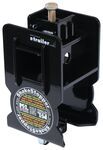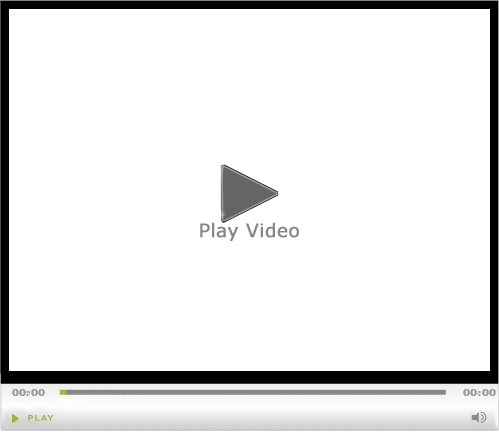![]()
![]()
Videos are provided as a guide only. Refer to manufacturer installation instructions and specs for complete information.
Video Transcript for Blue Ox Trailer Hitch Beginner-Friendly Setup - 2017 Honda CR-V
Hey, everyone, Shane here with etrailer.com. Today I have a 2017 Honda CRV. I'm gonna walk through how to install the Blue Ox Class III etrailer hitch receiver. This is what our hitch is gonna look like when it's installed. You can see the cross tube, however, one thing that Blue Ox does do that's really accommodating is they mount this bracket right here and this is for wiring. If you wanna add it on there, this is one less thing you're gonna have to purchase to get your wiring mounted in more permanent location.
This is gonna be a two inch by two inch receiver tube opening, so it's going to accommodate a lot of different accessories. It's gonna be a black powder coat finish steel. It's gonna hold up really well in all weather conditions. We're gonna have plate-style safety chain loops. It's going to accommodate pretty much any size safety chain hook that you may have if you are towing.
Our hitch pin hole here is gonna be 5/8 inch in diameter. It's gonna take a standard 5/8 hitch pin. Hitch pin and clip does not come with it, however, you can find 'em here at etrailer. Adding a hitch like this is going to give you a lot of different options. Maybe you wanna put a bike rack on it, a cargo carrier, maybe you wanna haul a small trailer.
Our neighbor today is just gonna be using it for a bike rack, so if there's options for two inches and inch and a quarter hitches, I always recommend going with the two inch hitch because the two inch hitches are going to allow you to put more bikes on a rack. When you go down to the smaller hitches, an inch and a quarter hitches, you're limited up to two bikes, which brings me to the weight capacity. You're gonna have a 600 pound max tongue weight, which is a downward pressure on the inside of the receiver tube and a 4,000 pound gross trailer rate, which is a trailer plus the load included. I do recommend checking the owner's manual of the vehicle. Make sure the vehicle can withstand that amount of weight; you're gonna go with the lowest number between the vehicle and the hitch.
This hitch cannot be used with weight distribution, keep that in mind. So if you're towing a trailer that requires weight distribution, this hitch is not going to work for you. Now I'm gonna give you a few measurements to help you when deciding on any of those hitch mount accessories like your bike racks, ball mounts, and cargo carriers. From the center of our hitch pin hole to the outermost part of our fascia, we're looking at about two inches and I'm keep that number in mind. For the bike racks and cargo carriers or anything that folds up, you wanna make sure it's not gonna contact. From the ground, the top innermost part of the receiver tube right here, we're at about 20 3/4 inches. We're gonna take off eight inches for the lift that we're on, so we're looking at about 12 3/4 inches. That number's important for your ball mounts. With it being at 12 and 3/4 inches, I'm always gonna recommend if you're gonna be towing a trailer, put the ball mount in the rise position to give you a little bit more ground clearance. As far as the installation process on this, it's really not too difficult. You have two bolts on one side, two on the other, and you'll have one that goes across right here in the middle on the tow hook. Other than that, it can be a little bit tricky because your exhaust only comes down so far. There is a fourth hanger farther up towards the middle of the car. If you wanted to take that off to give yourself a little bit more room, you can do that. However, make sure you are supporting the exhaust so you don't mess it up and you don't do anything to the piping running up to the front of the car. If you don't wanna do it, you don't wanna chance it, you don't wanna mess with that fourth one up there, you can get it done with the three. You have one over here, one here, and one right here in the middle. You can get it done with just removing those three hangers. If it's something you may not have the time or space to do, you can always check out our dealer locator, find someone near you that's able to put it in. If you wanna do it, I promise you, you can get it done in your garage, your driveway with a few simple tools. Follow along with me and I'll walk you through how to do it. Start our installation, we're gonna need to lower the exhaust, but you wanna take a strap, you wanna go underneath your exhaust pipe there. This vehicle has a couple holes right there from a bracket that I'm gonna utilize. If you don't, you can actually just take it and hook it onto the springs is where I typically do it. And then what we're gonna do is we're gonna come over to the rubber isolators, straight up here. You're gonna have one that's held on in three spots. We're gonna remove two. So take some soapy water or some silicone spray, anything like this, some kind of lubricant, spray it down and we're gonna take a pry bar. We're just gonna pry it right off the end of each of those. We're gonna be removing the two off the outside two pins. We're gonna do that same thing on the opposite side. Once you got your two outside ones done, then you're gonna come to the middle and do the same thing there. Really doesn't matter which you do, the top or the bottom on this one, see whichever one is easier to get off here. Next, you wanna take a pull wire that comes in your kit, bolt. There is gonna be one that's gonna be long. Don't use that one here, that's gonna be used for the center. You're gonna take one of these square blocks. I will say that the paint is very thick on the inside of this. So what I suggest doing is taking a drill bit. If you have a grinding bit, run it through there and kind of take off some of the paint around the four sides so that this leader will feed through there with a bolt on it. If not, once you get it up in the frame rail, you go to pull that down, it's gonna get stuck and you're gonna end up ripping that leader off and you may not pull the bolt through. So we're gonna start, we're gonna be using this hole and this hole here. We're gonna start with this one. We're gonna feed our leader in and come out this large hole here. Slide on your block, run your bolt, feed it in the frame rail, just like that. And then we're gonna repeat that same process for this one. Once you're done with one side, repeat the whole process on the other. Now if you have an underbody panel here, which most of these CRVs do, for whatever reason, this one's not on there, but it's usually a cardboard cover. Kinda goes like this, kinda square shaped and attaches here. And then a couple of fasteners, push pin fasteners. It is gonna require you to trim a little bit, like right in this area, of that cardboard off so that the hitch doesn't interfere with it. So you're just gonna follow your instructions to get that cut and put back in place. But from here, what we're gonna do is we're gonna take our hitch, we'll get an extra set of hands, we're gonna have pull wires put into the proper holes, get it up in place, and then we can get our hardware put in place and then we'll have one that goes here, as well. If you're doing this by yourself, you take it and set it up on your exhaust here. That'll help support it, may make it a little bit easier if you have an extra set of hands. With it up there, we're just gonna take our leaders. Y'all have a couple holes in the top of these plates on the hitch. You're just gonna feed 'em through the appropriate ones and match the holes in the frame rail, like that. So we're gonna grab the long bolt, this long spacer with the round hole and a nut. We're gonna raise this up. Go on the outside of your tow loop there. Put on the spacer block and the nut. We'll tighten this completely down later on. Now we're gonna go back, we're gonna lift up the back part of the hitch and get the wires removed and then the nuts put on those bolts. Once you get all your hardware in place, you're gonna come back, you're gonna tighten everything and then torque everything to the specifications in the instructions using a 3/4 inch socket. (torque wrench beeps) Once you get all your hardware torqued down, you can go ahead and reinstall your exhaust and you're ready to go. It's gonna do it for a look at and installation of the Blue Ox Class III trailer hitch receiver on a 2017 Honda CRV.






























 Arrives before Christmas
Arrives before Christmas 




















































Thank you! Your comment has been submitted successfully. You should be able to view your question/comment here within a few days.
Error submitting comment. Please try again momentarily.